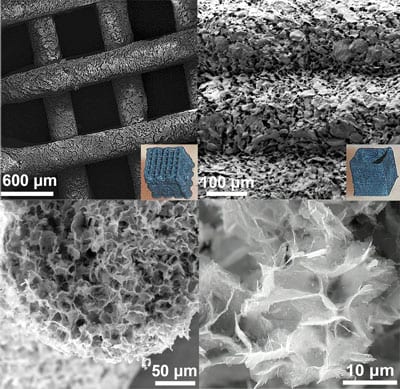For the first time, a team of researchers, from the School of Materials and the National Graphene Institute at The the University of Manchester have formulated inks using the 2D material MXene, to produce 3D printed interdigitated electrodes.
As published in Advanced Materials ( “3D Printing of Freestanding MXene Architectures for Current-Collector-Free Supercapacitors” ), these inks have been used to 3D print electrodes that can be used in energy storages devices such as supercapacitors.
MXene, a ‘clay-like’ two-dimensional material composed of early transition metals (such as titanium) and carbon atoms, was first developed by Drexel University. However, unlike most clays, MXene shows high electrical conductivity upon drying and is hydrophilic, allowing them to be easily dispersed in aqueous suspensions and inks. Graphene was the world’s first two-dimensional material, more conductive than copper, many more times stronger than steel, flexible, transparent and one million times thinner than the diameter of a human hair. Since its isolation, graphene has opened the doors for the exploration of other two-dimensional materials, each with a range of different properties.
Case Study: How PepsiCo achieved 96% cost savings on tooling with 3D Printing Technology
Above: PepsiCo food, snack, and beverage product line-up/Source: PepsiCo PepsiCo turned to tooling with 3D printing...






























0 Comments